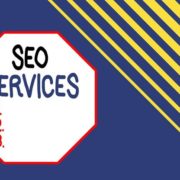5 Strategies for Seamless Onboarding and Offboarding Processes
Employee onboarding and offboarding play a crucial role in an organization’s success, but are often overlooked.
While 47% of companies lack the infrastructure they need to onboard their employees properly, 71% don’t have a formal offboarding process in place.
This not only affects the overall productivity of your team, but you also risk losing your top talents.
This article explains why you need to build a formal onboarding and onboarding process and outlines five strategies to help you with it.
Why do you need a formal onboarding and offboarding process?
Retaining employees remains one of the biggest challenges for recruiters. That’s because about 58% of organizations still think onboarding is all about paperwork and formal processes.
But that’s only partially true.
Onboarding is also about making your new hires feel welcome to the company and getting them acquainted with the culture and visions. It involves equipping them with every tool and resource they need to get comfortably started with their new role and thrive in it. Recent surveys say strong onboarding can increase new hire retention by 82% and productivity by 70%.
Talking about offboarding, most organizations don’t consider investing in offboarding, which can hurt your company’s branding and security. Here’s how:
- With proper onboarding, you can ensure cutting all account-related ties with your old account, reducing security threats to your organization’s data.
- Parting ways on bad terms with your employees can result in them bad-mouthing you in the market. This pushes your potential hires away and often affects your business.
- A systematic offboarding helps you rehire your past employees, and maintain good relationships with them.
- An organized offboarding process facilitates knowledge transfer from departing employees to their successors or colleagues. It allows for the documentation of critical information, processes, and contacts, minimizing disruptions to business operations and ensuring continuity in workflows.
Both onboarding and offboarding allow you to begin a new journey with an employee on a positive note. By employing a proper structure to the processes, you can be on their good books and reduce the likelihood of delays, errors, or oversights.
Moreover, a formal process ensures consistency in how new employees are introduced to the organization and how departing employees are managed. Consistency helps maintain fairness and equality across the workforce, regardless of individual circumstances or departments.
5 Strategies for Seamless Onboarding and Offboarding
A formal onboarding and offboarding process is crucial to organizational success as it fosters engagement, retention, and knowledge management. Here’s how you can build a solid onboarding and offboarding process.
1. An introduction email goes a long way
One of the best ways to welcome a new hire on their first day is to shoot an introductory email to your entire team. While it formally introduces the new hire to their team members, it also makes them feel valued and acknowledged on their first day.
Moreover, by doing so, you speed up the introduction process by breaking the ice for the team, so they can go on building their network and socializing with the new member.
However, writing introductory emails doesn’t mean you should skip the in-person introduction. You should anyway give a full-fledged tour of the company, the team, systems, workflows, and projects—introduction emails are just to make sure the news reaches everyone on the team, even those who might be working from home or absent.
Here’s a sample new employee introduction email you can take inspiration from:
Hi <name>,
I hope this email finds you well. On behalf of the entire [Company Name] team, I am thrilled to extend a warm welcome to you as our newest [Job Title].
Your expertise and skills align perfectly with what we were looking for, and we are confident that you will quickly become an integral part of our organization. As you begin this new journey with us, please know that we are here to support you every step of the way.
To help you settle in smoothly, we have prepared an onboarding plan tailored to your needs. This includes introductions to key team members, training sessions to familiarize you with our processes and tools, and any other resources you may require to excel in your role.
Please don’t hesitate to reach out if you have any questions or need assistance during your onboarding process. Our team is here to ensure your transition is as seamless as possible.
Regards
<Signature>
2. Offer structured training programs
A new role can be challenging to fit in—you need to learn the technical nuances of the job and understand the internal functioning and processes of the team. This is where you can offer training opportunities to the new hire to adjust and grow in their new role.
Here are some tips:
- Assess the skills and knowledge required for the new role and identify any gaps that need to be addressed through training. This could involve technical skills, job-specific knowledge, company policies and procedures, or soft skills development.
- Understand their personal preferences—what they want to achieve in the next year, what’s their learning style, and how would they like to proceed with it.
- Create or curate training materials and resources to address the identified training needs. Include a mix of online courses, manuals, videos, presentations, or interactive modules.
- Establish a training schedule that outlines the sequence of training activities and their duration. Consider factors such as the new hire’s availability, the urgency of certain training topics, and any pre-existing commitments or deadlines.
- Designate trainers, mentors, or subject matter experts to facilitate the training sessions. These individuals should have expertise in the relevant areas and be able to provide guidance, feedback, and support to the new hire throughout the training process.
- Provide opportunities for job shadowing to help them gain insights into the role, duties, and work environment firsthand by observing how the mentor navigates various tasks, interacts with colleagues and clients, and solves problems.
Following these processes, you can set your new hires up for success in their new roles and become an ideal employer in their eyes.
3. Ease their resignation journey
Saying goodbyes is never easy. But you can make sure your employees are parting ways with you on a good note and respectfully. For this, you can help them move on to their journeys by offering assistance in every way possible.
One way is to offer a simple resignation letter sample they can take inspiration from and say their goodbyes most effectively. This will help them include all the required information in their resignation letters, including a statement of resignation, resignation effective date, expression of gratitude, reason for resignation, etc.
But why does this gesture matters?
For starters, your employees will see how thoughtful and considerate you are being by offering these kinds of assistance to them. This might motivate them to spend their notice period training their replacement or closing every new task before they leave for good. Second, it’s a great way to keep a door open with them, just in case you happen to re-hire them in the future.
4. Develop flexible onboarding and offboarding plans
Start by understanding the unique needs and preferences of each employee. This could involve conducting surveys, interviews, or assessments to gather information about their background, experience, learning style, and any specific requirements or accommodations they may need during the onboarding or offboarding process.
Tailor onboarding and offboarding materials, such as welcome packets, training resources, checklists, and exit documentation, to accommodate the individual needs of employees. Make sure to take their work-life balance into account.
Offer flexibility in scheduling onboarding and offboarding activities to accommodate employees’ availability and preferences. This could include staggered start dates, part-time or remote onboarding/offboarding options, or personalized timelines based on individual circumstances.
Lastly, you can also offer flexibility in exit processes to accommodate different circumstances and reasons for departure. This could include options for phased exits, temporary leave, or reassignment to different roles within the organization, as well as support for employees transitioning to new opportunities outside the company.
5. Invest in alumni networks and relationships
To facilitate ongoing communication and engagement with former employees, you can create a structured alumni program or network, where you can include alumni directories, newsletters, social media groups, and networking events. Additionally, you can create online platforms where alumni can connect and stay informed about company news, events, and job opportunities.
Moreover, you can tap into your alumni networks for talent recruitment, industry partnerships, business development opportunities, and mentorship programs. You can also invite them to serve as guest speakers, panelists, advisors, or consultants on projects or initiatives where their expertise could be valuable.
Effective onboarding and offboarding contribute to a strong culture and higher retention
Investing in good onboarding and offboarding strategies not only contributes to smoother transitions for individuals, but also enhances overall efficiency, compliance, and employee engagement.
Thoughtful onboarding allows you to set the stage for long-term success by equipping employees with the tools, knowledge, and support they need to thrive in their roles. Similarly, a well-managed offboarding process ensures departing employees leave on positive terms, maintaining relationships and potentially even serving as brand advocates in the future.
Do you have such an onboarding and offboarding process in your organization?



